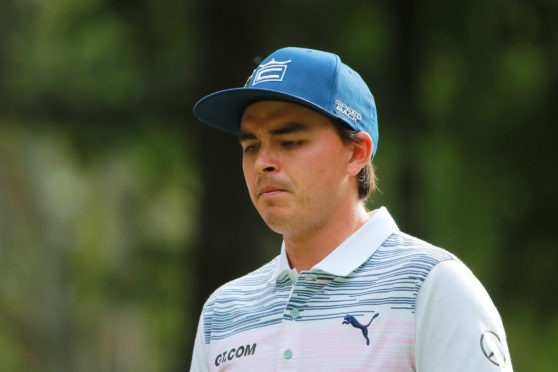Golf’s contentious rules overhaul “hasn’t gone as smoothly as I would have liked” but in the end will be recognised as being good for the game, says R&A chief executive Martin Slumbers.
Slumbers acknowleged issues with the new rule book introduced on January 1 and didn’t quite concur with the view of his USGA counterpart Mike Davis, who last week called the rules overhaul “a huge success” to widespread derision in the game.
There have been widespread complaints particularly at the elite end of the game over caddies lining-up, a new method of dropping the ball, cases of “backstopping” and the re-introduction of a player being able to keep the pin in the hole when putting.
But the chief executive said that any issues would “be worked through” in consultation with the players and the main tours and said that the simplified rule book was “the right thing for the game of golf.”
“There have been some unfortunate situations, there’s no doubt about that,” said Slumbers. “If I was honest it hasn’t gone as smoothly as I would have liked.
“I’m a realist around this. We’ve made the biggest change in a generation to the rules of golf. I’m not forgetting what the big picture is here, to modernise the rules and to create something which is modern and relevant to the game.
“We are working very closely with the players and the tours, there’s been a lot of education and I remain completely committed to this being the right thing for the game.”
The R&A were forced to issue clarifications on the rule concerning caddies lining up players after two cases which involved a penalty for lining up correctly applied in Haotong Li at the Dubai Desert Classic and then incorrectly applied to Denny McCarthy in Phoenix on the US Tour, which was later rescinded.
“What we saw in the PGA Tour was a practice swing, not making a stroke,” said Slumbers. “In Dubai, you couldn’t have had it with a worse timing, on the 72nd hole of the final game. But those were the cards we were dealt. The referees applied the rule correctly as it was written.
“There is no question in the rule about intent. You want to create some simplicity and clarity in the way the rules are written because if it is too grey it becomes impossible to officiate, and so the rule was not about intention to line up, it was about whether the caddie is there when the player takes his stance.”
In the case of the new drop, Slumbers said that the previous method of dropping from shoulder height too often required many re-drops to get a suitable spot, and more often than not resulted in the ball being placed, all slowing the pace of the game.
“We need the ball back in play quickly, and we wanted to avoid the placing of the ball,” he said, saying that Rickie Fowler being penalised for an illegal drop at the weekend was “unfortunate”.
“It’s the first time it’s changed in 35 years and the first change ever for many players,” he added. “It took time for players to get accustomed to the last change.”
The rule allowing the flag to remain in the hole was primarily designed for the amateur game to speed up play, and was having an effect there already, he said.
“I’ve been somewhat surprised how many players have left it on the Tour in for the short putts,” said Slumbers. “As a golf fan who loves watching the game on TV, I quite like them leaving it in because I can see now where the hole is.”
There had been feedback from a couple of clubs indicating the cut of hole was now being damaged more often, but it would all be monitored, he added.
“It wasn’t intended as a rule to improve performance, it was intended to improve pace of play, and it’s something we will watch and see,” he said.
“But these are early days. This is not the time to make knee‑jerk reactions.”
Slumbers did indicate the R&A’s continuing concern with pace of play, and their steps in their own events to quicken the game, praising the speed of Dustin Johnson and Rory McIlroy in the final round of the WGC Mexico Championship at the weekend.
“What does the R&A really care about is that the game is thriving 50 years from now,” he continued. “To do that, we have to get more people playing, and it is quite clear that the slow pace of play of golf generically doesn’t help.
“Ultimately it’s up to all the players on Tour to take responsibility to play quicker, and that’s why I smiled when I saw Dustin and Rory getting on with it. Two of the best players in the world ‑ Brooks (Koepka) actually is another one who plays quite quickly and has been making some comments on this recently.
“Adam Scott as well. I think it’s good for the game that the players are starting to talk about it more.”










